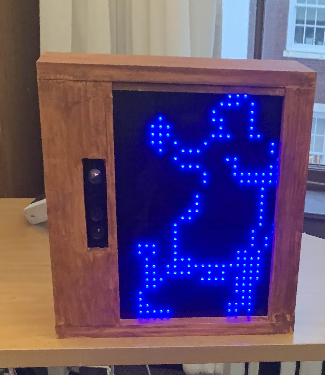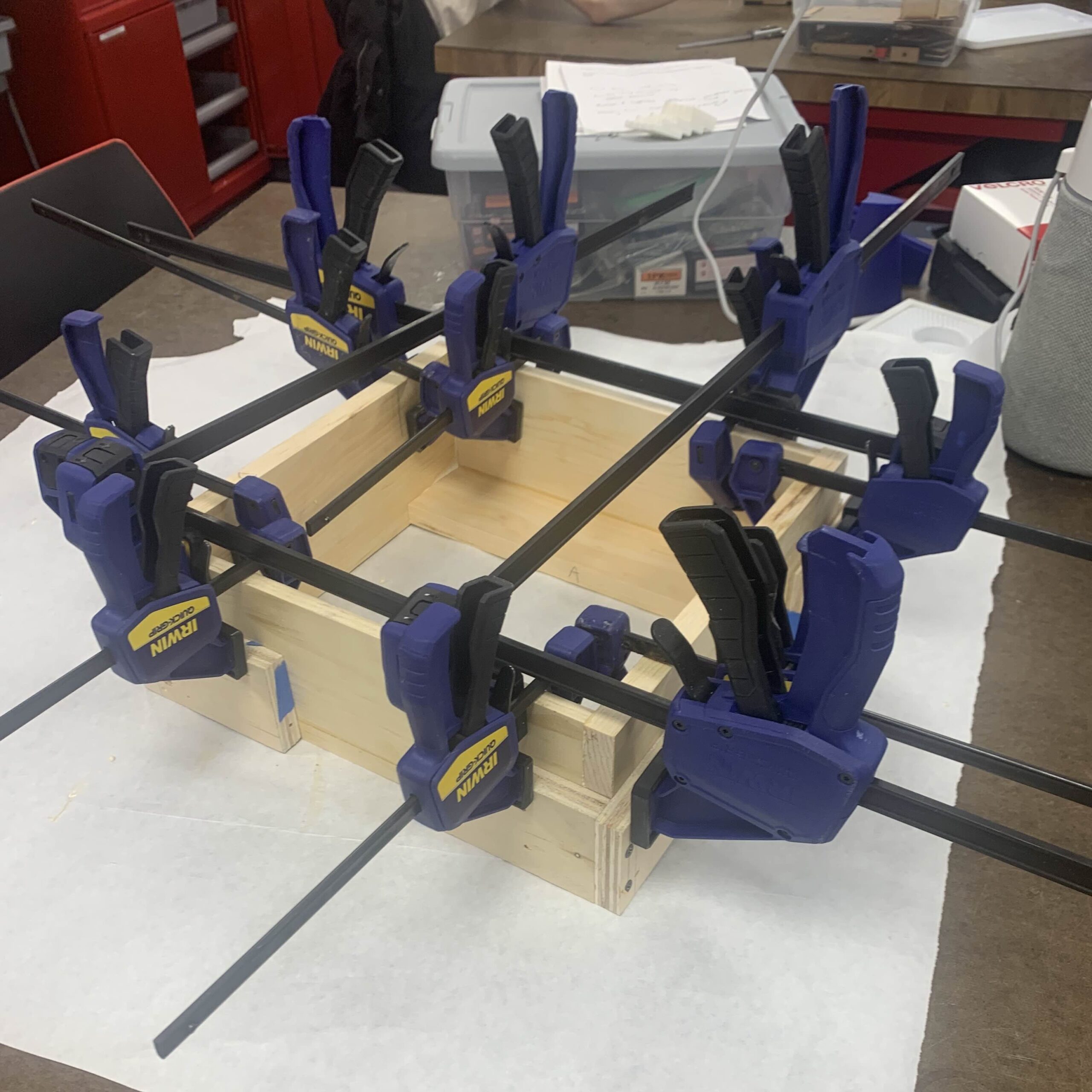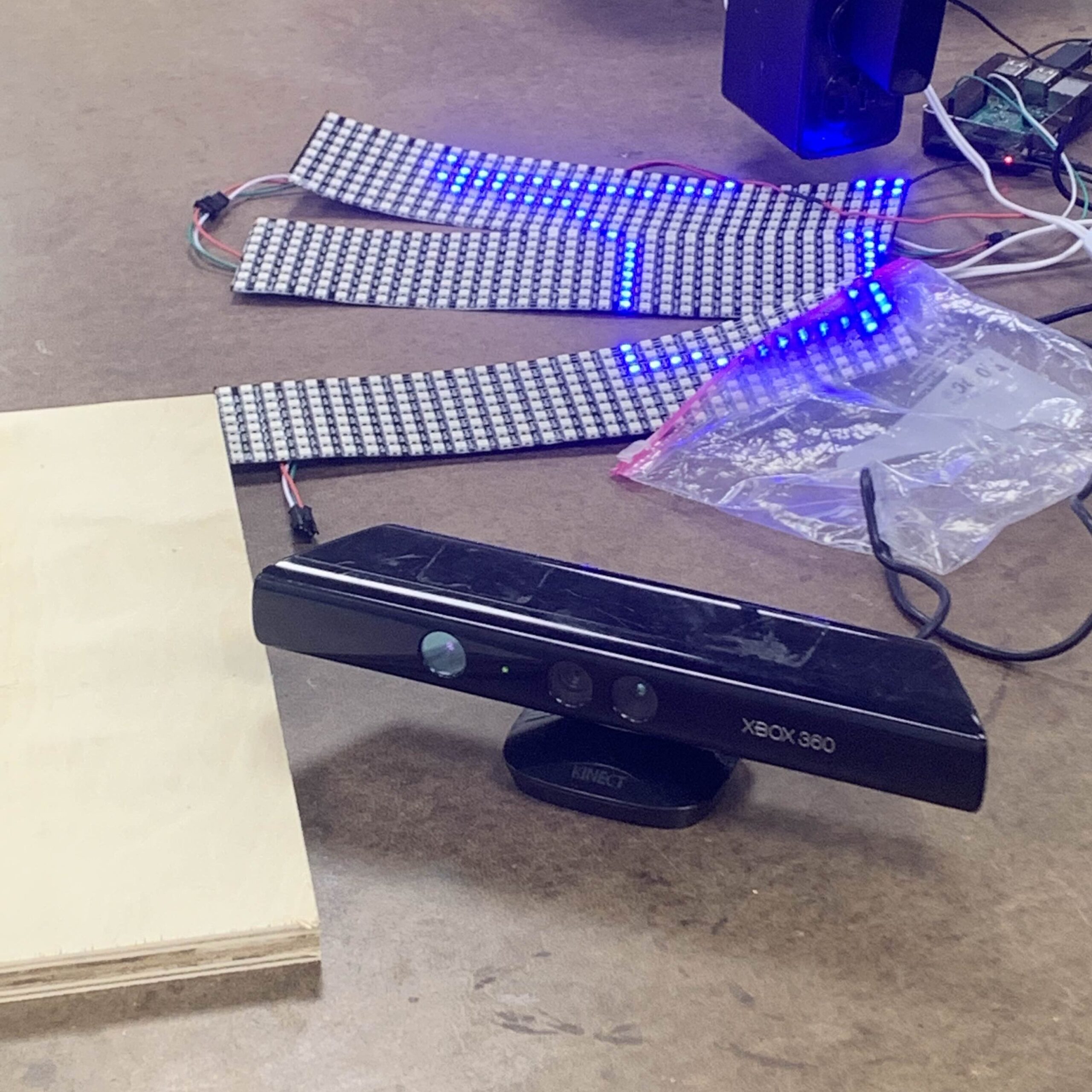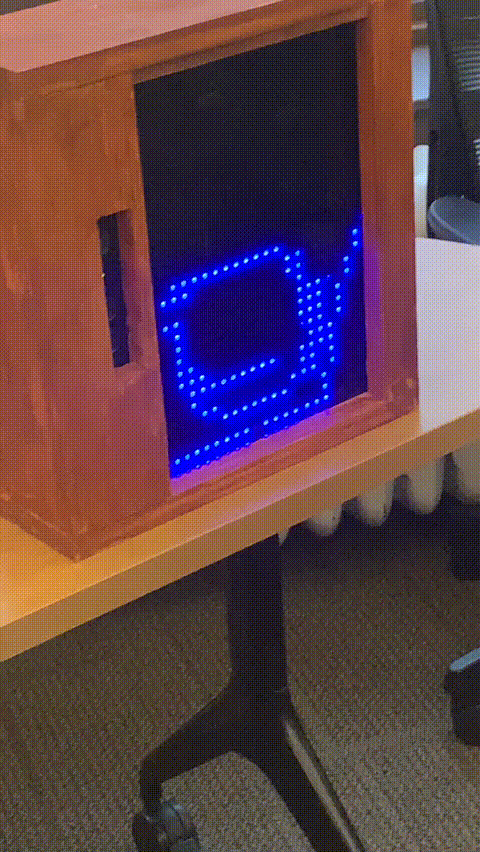The LED Kinect’d Mirror is an individual project utilizing the XBOX Kinect’s ability to capture depth data in a 640×480 image. The goal is to mirror the captured depth data to transfer through the Raspberry PI onto the LED Matrix to display the subject’s outline. As such, interactivity was the focus of this project.
This display will look like a mirror frame with the Kinect aside from the LED Matrix – this will allow a seamless combination of both components and maintain the interactivity. The material for the frame will be made of plywood.
Given that this is the first time I have used a Linux OS and the Microsoft Kinect, I spent a good while testing the hardware with some basic code.
Utilizing OpenGL and the Libfreenect Driver on GitHub, I can grab the depth data and visualize it before testing on the LED matrix.
In order to compress the 640×480 image, I created a filtering algorithm that compresses the data into 32 x 24 (very small). I utilized the Linux terminal to print an ASCII version of my outline to test this out.
As I near the end of the prototyping stage, I began engineering the mirror frame via simple woodworking. I also daisy-chained three separate 32×8 LED matrices to get my 32×24 canvas. I also had to consider the layout of the contraption itself, since the Kinect had to be placed in a portrait orientation for it to capture the user’s body the best
After a month of tireless work, I completed the LED Kinect’d Mirror project!
Overall, this was an ambitious project as I took a risk with all this unfamiliar hardware, but I learned a lot about Linux terminals and C compilers in this project, which made the project very rewarding
If you were to own your very own LED Kinect’d Mirror, it would be best to have it at eye level. Here is a GIF of my favorite test with the mirror’s capabilities.



